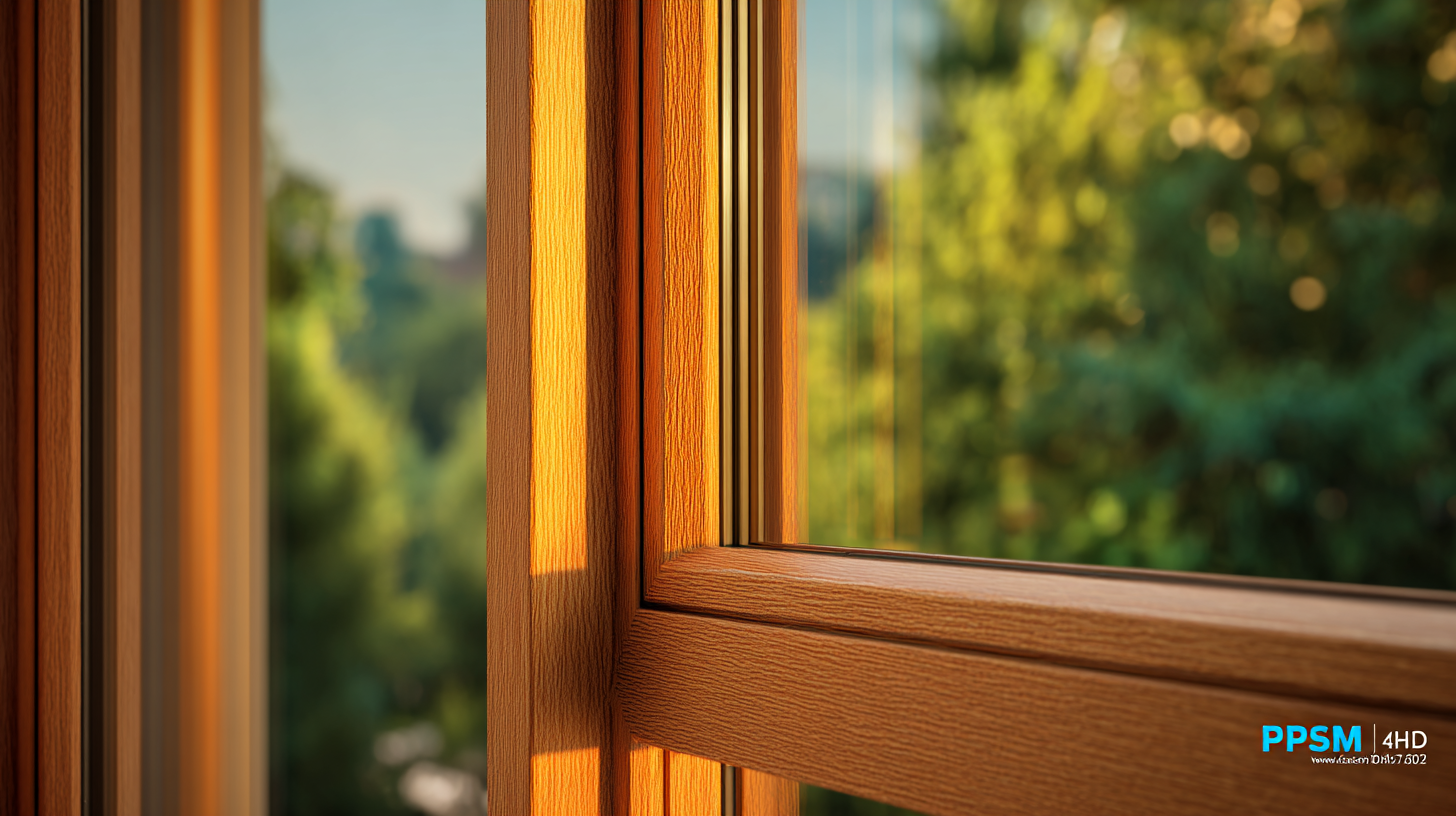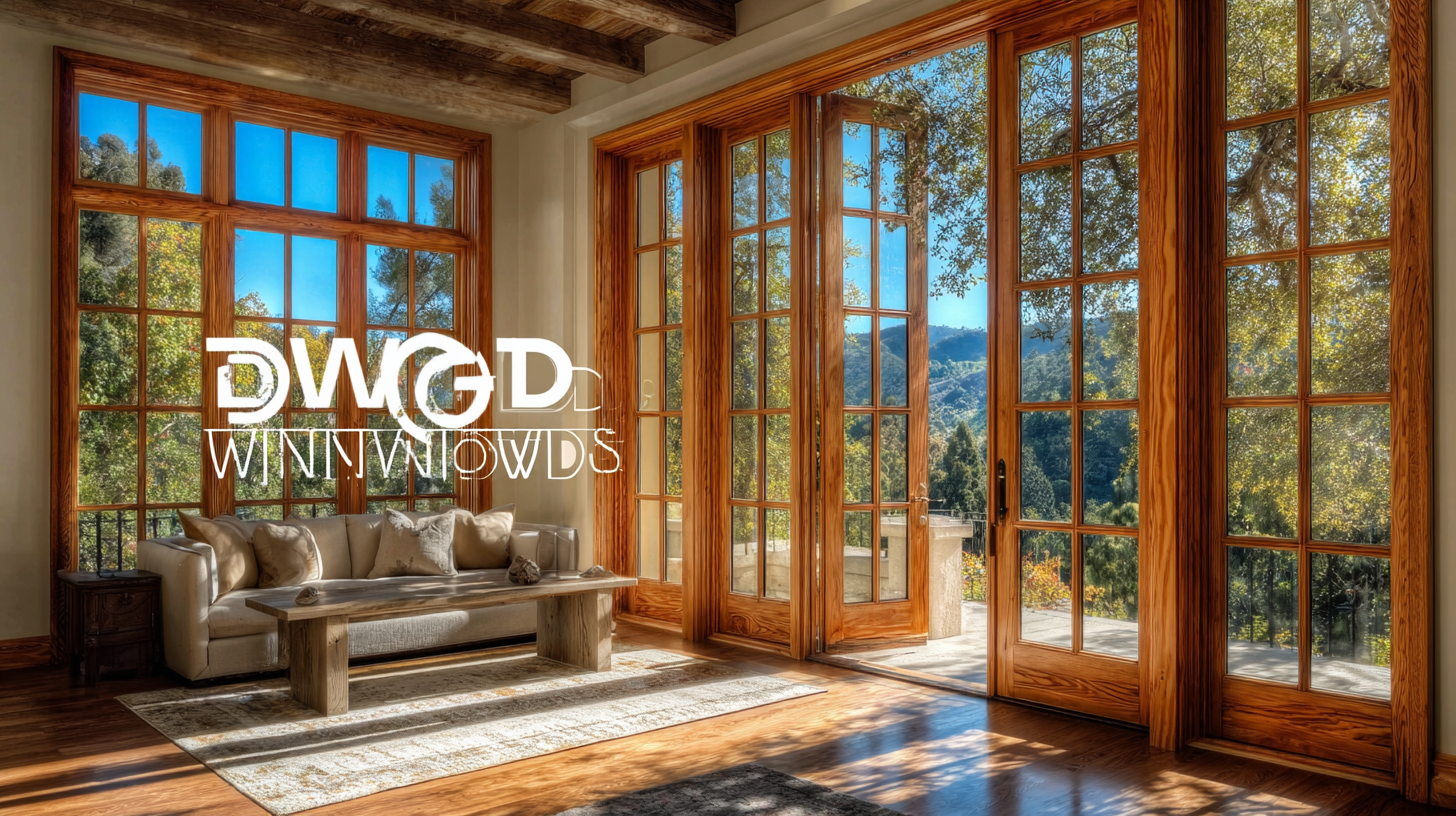As we venture into 2025, the wood windows and doors industry is poised to undergo significant transformations driven by technological advancements and evolving consumer preferences. According to a recent report by Grand View Research, the global wooden window and door market is projected to reach USD 18.3 billion by 2025, growing at a CAGR of 5.3%. This growth is fueled by a surge in demand for sustainable building materials combined with the increasing focus on energy efficiency. Notably, innovations in manufacturing processes and smart technology integrations are set to redefine the standards of durability, aesthetics, and functionality for wood windows and doors.

As manufacturers strive to strike a balance between traditional craftsmanship and modern technological solutions, it becomes essential to explore these emerging trends that will shape the future landscape of the industry.
The wood window and door manufacturing industry is on the brink of transformation, driven by innovative technologies that enhance performance and sustainability. According to a recent report by the Freedonia Group, the demand for wooden windows is expected to grow by 4.8% annually through 2025, largely due to advancements in energy efficiency and design aesthetics. Companies are increasingly adopting state-of-the-art machining and assembly techniques that promise improved durability and reduced waste. For instance, the integration of automated manufacturing processes allows for precise cuts and finishes, minimizing errors and enhancing product quality.

Sustainability is another significant trend reshaping the future of wood windows and doors. A study from MarketsandMarkets reveals that eco-friendly materials and practices are gaining traction, with the green building materials market projected to reach $364 billion by 2025. Wood manufacturers are exploring sustainable sourcing methods, ensuring that their timber comes from responsibly managed forests. Additionally, innovations in wood treatment processes not only extend the life of products but also reduce the frequency of maintenance, thus appealing to environmentally conscious consumers looking for long-lasting solutions. These advancements signify a pivotal shift towards a more sustainable and technologically driven industry, positioning wood windows and doors as a viable option for modern constructions.
As we approach 2025, the wood windows and doors industry is witnessing a transformative shift towards enhanced energy efficiency standards. According to the U.S. Department of Energy, buildings account for nearly 40% of total energy consumption, making energy-efficient windows and doors a critical component in reducing this figure. The focus on energy-efficient materials, insulation properties, and advanced glazing techniques is leading manufacturers to innovate and meet the stringent guidelines set by regulatory bodies.
Recent studies indicate that energy-efficient windows can reduce heating and cooling costs by 25% to 50%. By incorporating triple glazing, low-emissivity (Low-E) coatings, and gas-filled spaces, wood windows can significantly improve thermal performance. Furthermore, the National Fenestration Rating Council (NFRC) provides ratings for energy performance that have become essential in consumer decision-making, placing a premium on products that adhere to higher energy efficiency standards. As we move closer to 2025, these advancements in wood window and door technology not only promise to enhance energy conservation but also contribute to sustainable building practices.
The trend towards sustainable materials is significantly influencing the wood windows and doors market, especially as we look toward 2025. Recent industry reports indicate that the global wood products market is expected to reach approximately $500 billion by 2025, driven by rising demand for environmentally friendly and energy-efficient building materials. As more consumer preferences shift towards sustainability, manufacturers are increasingly focusing on the use of recycled and responsibly sourced wood. This not only aids in reducing the carbon footprint but also enhances the aesthetic appeal and overall value of wooden products.
In addition to the rise in sustainable materials, the handcraft market is witnessing a notable expansion. Within this sector, wood products are projected to hold a significant market share along with textiles and metal art pieces. Data from market analysis shows that the residential end-user segment is particularly poised for growth, as homeowners continuously seek unique, handcrafted solutions for their spaces. Furthermore, innovations in distribution channels, such as specialty stores and online platforms, are making these sustainable wood products more accessible to a broader audience, ultimately promoting further shifts in consumer behavior toward eco-friendly options.

Proper maintenance is crucial for extending the lifespan of wood windows and doors, which are not only aesthetically pleasing but also a significant investment in any property. According to the National Wood Window and Door Association, well-maintained wood windows can last over 30 years, while those neglected can deteriorate within a decade. Regular inspections are essential; homeowners should look for signs of wear, such as peeling paint or weatherstripping that has become loose. By addressing these issues promptly, you can prevent more cumbersome repairs down the line.
In addition to routine maintenance checks, proper cleaning and sealing are vital. The American Architectural Manufacturers Association recommends using a gentle cleaning solution and avoiding abrasive scrubbing, which can damage the finish. Sealing wood surfaces every few years with high-quality sealants can protect against moisture, which is one of the leading causes of wood decay. Moreover, keeping an eye on local weather impacts can guide maintenance schedules—homes in humid climates may require more frequent attention. By following these expert tips, homeowners can significantly maximize the durability and performance of their wood windows and doors.
As we look ahead to 2025, the intersection of technology and traditional craftsmanship in wood windows and doors is set to redefine home design. Smart technologies are not just an enhancement; they are becoming integral to how we create comfortable and energy-efficient living spaces. Innovations such as automated window systems, which can open and close based on indoor air quality and external weather conditions, will not only optimize ventilation but also improve energy consumption. This future-proofing aligns with sustainability goals, allowing homeowners to invest in features that not only last but also adapt to changing environmental standards.
Moreover, advancements in materials and finishes are making wood windows and doors more resilient and low-maintenance. In 2025, we can anticipate the integration of smart sensors that monitor humidity and temperature, alerting homeowners to potential issues before they escalate. Coupled with advanced security features like remote locking and monitoring, these technologies provide peace of mind while enhancing the aesthetic appeal of woodwork. Embracing these innovations will empower homeowners to enjoy the warmth and beauty of wood, all while reaping the benefits of modern technology.




